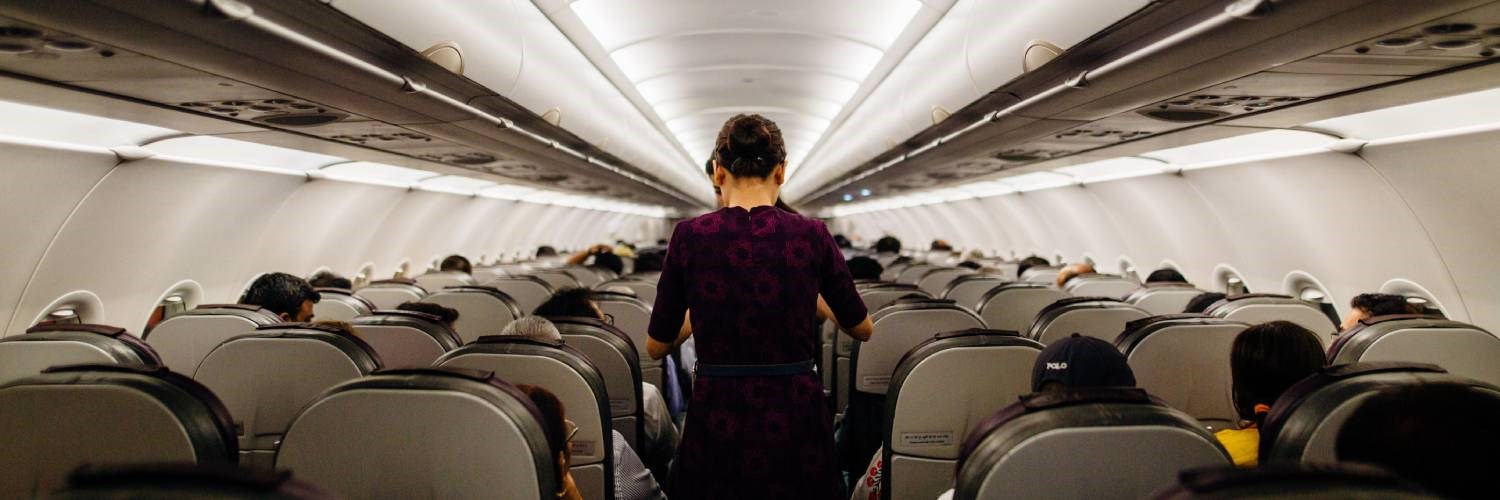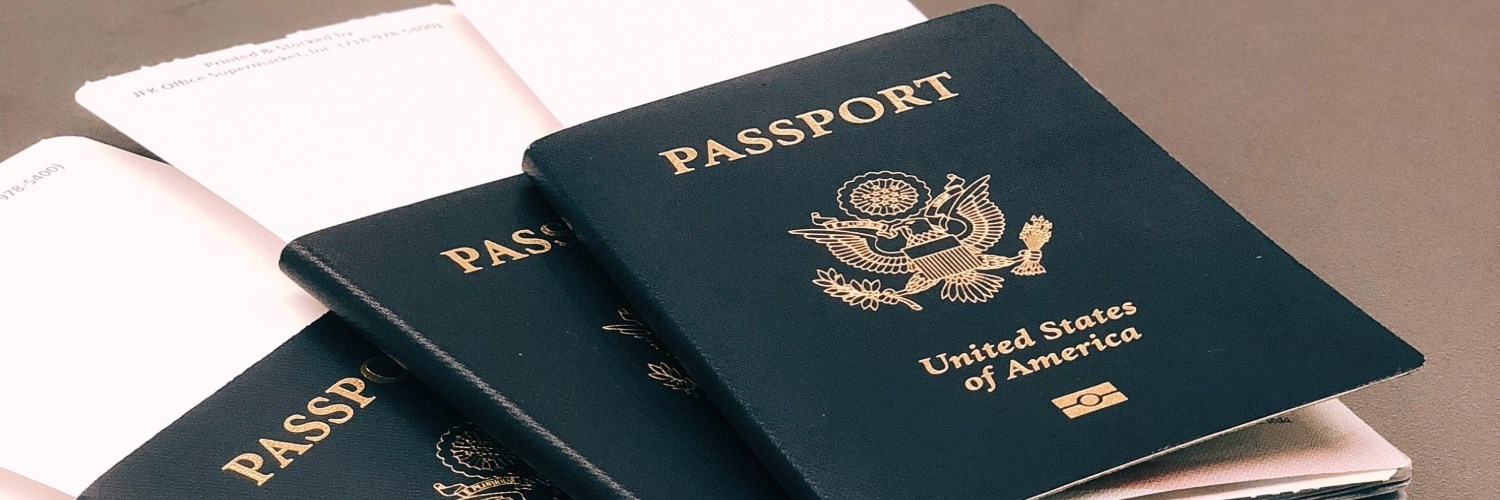
Traditional Travel Insurance vs Airline Insurance
Buying airline tickets has become incredibly easy. Most people don’t even use travel agents anymore. They simply hop online, search using a flight aggregator, and select a flight that best fits their needs. In most cases, they pay for the ticket online through the airline website and receive an email with confirmation and a digital ticket. No human interaction whatsoever. Airlines have kept up to speed with the behaviors of their customers and are offering more and more options to travelers on their websites or through their apps. One such added value is the ability to purchase travel insurance right after your ticket.
For most people, this may seem like a great deal and a convenient solution. However, is the insurance the airline offers as good as traditional travel insurance? We explore the difference between the two in this post.
No Standardization
Airlines are not obligated to offer their passengers any sort of travel coverage. This is an extra service they offer as a convenience to their customers. There is no standard or baseline travel insurance on offer by all the airlines. Some carriers do not even offer travel insurance. While others use third parties to give coverage plans to people that are interested.
Varying Benefits
As mentioned above, airline travel plans can vary in many ways including benefits, costs, and types of coverage. For example, one carrier’s insurance may cover the entire cost of your trip while another may have a set limit of up to $1000. There can also be a difference in benefits, like travel medical coverage or lost baggage. Plans also come in many different price points, from the very cheap to fairly expensive. All this can once again make it hard to understand or compare plans.
Lack of Choice
A problematic part of buying airline insurance is that travelers have no choice. In most cases, an airline has an underwriter to their insurance and that is the only one a ticket holder can select. This means even if the insurance company is not your first choice, you are forced to go with them if you buy through the airline.
The lack of options does not stop with just the underwriter or third-party provider. Most airlines only have one plan that you can choose. A one solution fits all approach is used which can leave you exposed to risks that you would normally want to have covered. Since there is no customization of plans you may find that sometimes many of the activities you wish to participate in during your trip are not covered. One common example is if you are into adventure sports and take a trip on which you will be rock climbing, the airline insurance may not cover this type of high-risk activity.
Independent Travel Insurance Providers Offer True Choice
One of the great things about purchasing traditional travel insurance is that you have an actual choice. A traveler can easily shop around for price, benefit limits, and coverages. There is no restriction on who you purchase from and what type of coverage you get. When buying regular travel insurance, you can work with agents to find the plans that suit your needs and give you coverage where you need them. Whether that is higher reimbursement for baggage because you are carrying expensive camera equipment or better medical coverage because you are taking a trip to an area that has a high chance of disease. Traditional travel insurance gives you the ability to make choices that will reflect the risks you expect to face.
Expertise In Travel Insurance
Airlines are essentially middlemen for the insurance provider. This means that they are not the most knowledgeable about the coverage. When you deal with a travel insurance provider directly, you get the massive benefit of interacting with experts in the field who have firsthand knowledge. They can offer guidance and recommendations that will save you time, money, and headaches.
So the next time you need travel insurance, weigh the pros and cons of airline travel insurance and traditional travel insurance, and make an informed decision that is best for your circumstances.
Trawick International offers many plans that cover trip cancellation, lost baggage, travel medical, and more. These plans even cover COVID-19 like any other illness. To learn more about how our plans treat the coronavirus, visit our COVID-19 FAQ page. Click below to get a quote or to chat with a travel insurance expert to find the right travel insurance for your needs.
By
Administrator at 31 Mar 2020

Essential Travel Documents: A Quick List for Every Traveler
Traveling to a new country for the first time is always a thrill. Most tourists plan for months in advance. They work out their itinerary from departure to return making sure they have all the tourist hotspots mapped out and scheduled. Hotel bookings are another priority and travelers browse online forums and review sites to find the right location for their stay. However, many people don’t pay attention to their travel documents. In many instances, it is the last thing on their mind hastily grabbed on the way out the door. We suggest that a little more importance is given to these documents. They could end up saving you a lot of headaches when you travel abroad or domestically. Here is our list of the must-have documents for your next trip.
Government Issued Identification
The most important document that you should have with you is an official Identification. In most cases, this will be your driver’s license or Passport for international travel. Some experts advise travelers to carry their birth certificate also in case they lose IDs and need to prove their citizenship. If you have served in the armed forces then having your U.S. Military ID is also a good idea.
Visa and Green Card
When going to a new country it is always important to have the correct visas in place. This makes entering and leaving foreign countries smooth and easy. When coming back to the United States, permanent residents should have their Green Card ready or other visa documents on their person to present to immigration officials.
Credit Card and Copies of Credit Card
With credit card scams becoming a global issue, some airlines in certain countries will request that passengers show the credit card or proof that the ticket was purchased properly. Carrying a copy of the credit card or the actual card itself can be very helpful in these situations.
Travel Itinerary
Remembering the details for even a single flight can be troublesome. Imagine having to keep details of multiple international flights with connecting flights in your memory. The best approach to avoid forgetting any detail is to keep a photocopy of your itinerary with you along with a digital copy on your mobile device.
Travel Insurance
Many travel insurance documents are quite long and lugging around the pages may be a hassle. However, having this information on hand can be very useful when in a tough spot. Insurance providers may also have digital versions of the document for you to keep in your email or phone. This way you don’t have to keep bulky documents in your luggage but have the details you need anywhere you travel. Also, make sure to have the contact information of your travel insurance provider on hand so that you can call them in a pinch.
Copies of All Documents
One final tip is to make sure you have photocopies of all your travel documents. Keep these separate from your original documents so that if one set gets lost, you have a backup in place. Another recommendation is to keep a digital copy of these documents on your phone. To be even safer, save the documents to your email or a digital dropbox so that you can access it from anywhere, even if you don’t have your phone.
By
Administrator at 18 Mar 2020

Traveling & the Coronavirus Outbreak: How to Navigate Uncertain Times
The global COVID-19 outbreak has put air travel into a tailspin. Nervous passengers are canceling flights or postponing trips. Airlines themselves have been forced to drop routes to countries heavily affected by the pandemic and offer free cancellations. Now that the disease itself has moved on to other countries from China, people find themselves questioning whether they should even leave their homes. If you are one of these concerned people, here are some tips on protecting yourself while traveling and also keeping you calm.
Pre-departure Coronavirus Checklist
- Look at your departure date and see when you are traveling. If you have a month to go, it may be best to keep an eye on the situation and see how it develops before canceling or rescheduling your flight.
- Get in touch with your travel provider or airline to make sure that your flight will be running, and no change has taken place.
- Make sure you are up to date on travel advisories by the State Department or CDC. You can also check the WHO website to get details on the situation in countries around the globe.
- Make sure to protect your trip with Travel Insurance. Contact your travel insurance provider to ensure you have the proper coverage for your trip.
Healthy Practices When Traveling
- Practice good personal hygiene and wash your hands properly. This means making sure you use soap and warm water for at least 20 seconds after being in a public area like an airport or airplane.
- Do not touch your face, especially If your hands are not clean. The virus is transmitted through the eyes, nose, and mouth and the best way to avoid this is to not directly put your hands on your face.
- Cover your mouth when coughing or sneezing. It is recommended that you don’t cough into your hand and instead use a tissue or the inside of your elbow.
- Use a hand sanitizer that works to kill off viruses. Check the label to see how well the product works.
- Carry a roll of sanitizing napkins so you can quickly wipe down areas where you sit and eat.
- If you would like to use a face mask, get one that fits your face properly and is meant to prevent the spread of disease. Not all masks are made the same so some research should go into your purchase.
At the end of the day, deciding to travel is dependent on you. If you feel comfortable traveling, then you can make the choice. However, if you do not wish to take the risk then staying at home is the best course of action. However, staying calm is important whether you are on a plane, at the airport, or at home. If you choose to travel, Trawick International has you covered. Learn More about how Trawick International travel insurance is covering COVID-19.
By
Administrator at 17 Mar 2020

What's the difference between travel insurance and credit card travel coverage?
Cash has been replaced by plastic in most aspects of our life. From online shopping to paying bills, many of us use credit cards to make transactions. As credit cards become more accepted across the globe and easier to use, travelers have started to ditch cash and just rely on cards. They are just easier to carry, don’t have the same risk associated when lugging around a large amount of cash. Credit card companies have noticed the behavior of their customers and offer travelers many different perks and incentives. Some credit cards give away airline miles, while some offer trip protection. Many travelers wonder if credit card travel protection is the same as standard travel insurance. In this post, we will see how the two products differ from each other.
Coverage Options
When you rely on credit card travel insurance you have no choice in what type of coverage you get. The card has a set policy that all users are offered. It cannot be customized or tailored to fit your specific needs. When you buy travel insurance you have the ability to pick and choose a plan that fits your criteria. You can look at getting higher coverage for specific things like baggage, medical or extreme sports. You do not have to accept a one-size-fits-all policy.
Limited Benefits
Credit cards usually have fewer benefits when compared with regular travel insurance. Generally speaking, card protection can include trip cancellation or interruption, trip delay, lost luggage, rental car protection, and medical protection. However, when you put these benefits next to traditional travel insurance they are usually lacking. In some cases, these benefits do not exist at all with credit cards.
Coverage Restrictions
Some credit cards only offer protection for travel and trips that have purchased through their card. That means if you rent a car with cash, it will not be covered under your credit card. Additionally, most credit card plans only cover up to a specific dollar amount, not 100% of the trip cost. With standard travel insurance, you can use whatever mode of purchase you like and insure the total amount paid for your trip.
Covered Reasons
Credit card trip insurance and normal travel protection have specific covered reasons that trigger benefits. Credit cards once again lag in this area and have fewer covered reasons while traditional travel insurance can trigger benefits with a wider set of reasons.
Specialization
Credit Card companies are generally not experts in the field of travel insurance. They offer trip protection as an added benefit. Travel Insurance providers are professionals in the field and have the resources and knowledge to guide you when you have questions about your plan or are stuck in an emergency situation in an unfamiliar place.
Get the Details
In order to make the best choice, we recommend getting in touch with your credit card provider and ask them about their travel coverage. This is the only way you truly know what they have to offer. And when you want to get information about Travel Insurance, you can get in touch with the customer support team at Trawick International. We will guide you to the right plan that will offer the benefits you need for your next trip.
By
Administrator at 13 Mar 2020

How to Shop for Coverage for Visitors to the USA?
While many other countries provide medical coverage for free to citizens and, in some cases, visitors, the United States is not one of them. For those from other countries who are traveling, immigrating, or staying in the United States for other reasons, traveler’s insurance can be very important. Though we all hope that there is no need for it, considering the steep healthcare prices in the U.S. it is simply best to be safe rather than sorry. That is why we threw together this quick guide on how to shop for coverage for visitors to the US.
The most important thing to consider when you are shopping for visitor’s insurance is to compare plans. While it might seem easy to just go with the first plan that you find if it sounds good, finding the best option requires research and comparison. Until you look at multiple plans, it is easy to overlook what you might have been missing in another. You always want to seek out the best price and coverage in combination to make it worth your while. A little extra work here can go a long way towards finding you the best option.
If you want an easy and effective way to look for high-quality plans, the internet is the best way to go about it. You can simply search for visitor’s insurance and be met with a collection of sites that are ready to help you find a plan that is right for you. Often times, these websites will help you to choose a plan based on your specific traveling circumstances and needs. This can make it easier for you to get insurance that covers the time-span and kinds of circumstances that you are likely to face.
The biggest consideration when it comes to finding the right plan is why you will be in the country. Students traveling abroad might have different needs, or might even be able to get insurance through their schools. On the other hand, immigrants who are waiting on their green card or have just gotten it might need something more comprehensive and long-term. Be prepared to research what kinds of coverage you will need so that you can guarantee that the plan you end up choosing has it. This is the best way to go about getting insurance that will keep you covered when you really need it.
The good news is that visitor’s insurance is growing in popularity, which means you can easily find access to a variety of plan options that can help you put your mind at ease. Choosing the right plan is simply a matter of considering your needs, the duration of your stay, and how much you want to pay. After you have singled out the insurance policy that you want, you can make an easy online purchase and rest easy knowing that you are covered. As you begin your search, try looking at a minimum of five options before making a choice to ensure that you find quality coverage.
By
Administrator at 9 Mar 2020





